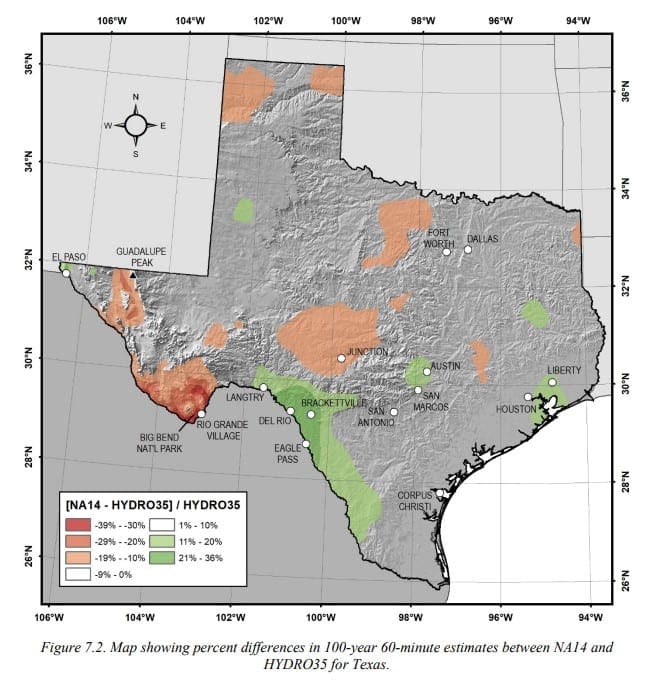
WGI Welcomes Melissa McKinlay as Vice President for Government Relations
Melissa’s addition to the team solidifies WGI’s leadership in helping communities harness the benefits of much-needed infrastructure projects throughout the nation.
Learn from award-winning professionals — explore our whitepapers, blogs, and the latest industry updates.
Join our dynamic organization of engineers, land surveyors, landscape architects, environmental scientists, and architects!
Talk to a market leader today! We’ll answer any questions you have about our professional services.

To better anticipate and prepare for these major storm events, the National Oceanic and Atmospheric Administration (NOAA) gathers and analyzes historical data to provide more accurate predictions of events like Hurricane Harvey. Historical data allows NOAA scientists to predict the magnitude of the 100-year storm event.
These numbers also serve as a reference for the Federal Emergency Management Agency (FEMA) to draw flood maps, identify areas subject to flood risk, and inform state and local municipalities involved in public and private development.

In late 2018, NOAA released an update that redefined the amount of rainfall required for a storm to qualify as a 100-year event. The previously accepted rainfall numbers had not been updated since the 1960s and 1970s. This study found increased rainfall values in many parts of Texas, with Houston being the most impacted. Houston saw the 100-year event estimate rise by five inches, and the previously 100-year estimates were found to occur much more frequently than anticipated.

How is your property affected?
Floodplain/Insurance
Floodplain boundaries may be redrawn due to the increased rainfall estimates, causing higher insurance rates. For example, in Austin, it is anticipated that the number of buildings within the 100-year floodplain will double. It is not anticipated to affect municipalities in the Northern Texas region.
Detention & Infrastructure Requirements
Proposed developments may see heightened detention and storm sewer requirements to account for the increase in estimated rainfall totals. Finished floor elevations of structures will have to be raised above the anticipated water surface elevations of these storm events.

Final Takeaways:
NOAA will continue to monitor areas of Texas and further develop Atlas 14 as more data is collected and analyzed. Advances in technology have allowed engineers and researchers to provide estimates with greater accuracy and frequency, which will result in more prepared and safe development.
For reference, ATLAS 14 Volume 11- Version 2 can be found here.

Team Leader, Dallas, TX

Melissa’s addition to the team solidifies WGI’s leadership in helping communities harness the benefits of much-needed infrastructure projects throughout the nation.

We are pleased to announce that Leigh Thomas (Cerda) has joined WGI as National Director of Public Infrastructure – Water, based in our Austin office.

WGI was ranked in the top 200 for the tenth consecutive year by Engineering News-Record (ENR) on their Top 500 Design Firms List for 2024.

If you’re curious about, or interested in joining the field of civil engineering, make sure you familiarize yourself with these 10 essential software programs.

Calculating impervious cover limits for mixed use projects located in suburban watersheds within the City of Austin could make your head spin. Our Austin team breaks down the regulations in simple terms.

WGI associates were recently in attendance at Texas Water 2023, the largest regional water conference in the Nation.
You’ve been searching for a place like WGI. We look forward to meeting you soon.
Sign up to receive emails to hear our latest news and achievements in our monthly newsletter.
Enter your zip code, and we’ll personalize your experience with local projects, office locations, team members, and more.
WGI supports its associates with meaningful opportunities for growth, strong benefits and perks, while we work collaboratively with clients and co-consultants to shape and improve communities.






WGI is a dynamic organization with opportunities nationwide for engineers, land surveyors, landscape architects, environmental scientists, and architects.